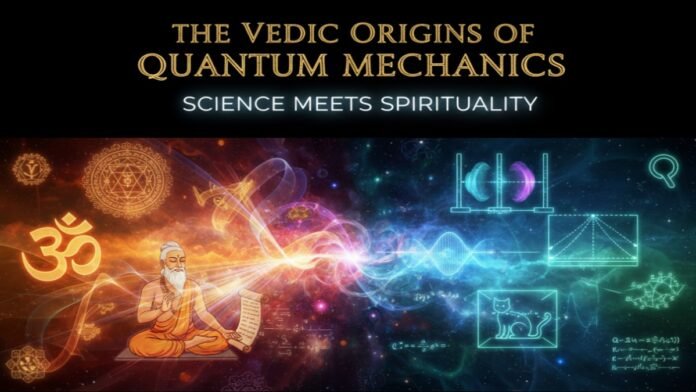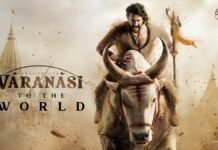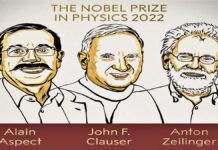
The intriguing parallels between quantum physics and ancient Vedic philosophy have captured the attention of scientists, philosophers, and spiritual seekers for over a century. This connection gained prominence when pioneering quantum physicists discovered striking resonances between their revolutionary findings and concepts articulated in texts written thousands of years ago. While this relationship remains both fascinating and contentious, it offers a unique perspective on how ancient wisdom and cutting-edge science might illuminate similar truths about the nature of reality.
Historical Context: When Quantum Pioneers Met Eastern Philosophy
The story of this connection is deeply personal and well-documented. The founding fathers of quantum mechanics—Niels Bohr, Erwin Schrödinger, and Werner Heisenberg were not merely casual readers of Vedic texts; they were profoundly influenced by them.
Niels Bohr (1885-1962), the Danish physicist and Nobel laureate, famously declared, “I go into the Upanishads to ask questions”. His engagement with Vedic philosophy was so deep that it shaped his interpretation of quantum phenomena. Both Bohr and Schrödinger observed that their experiments in quantum physics aligned remarkably with concepts they encountered in the Vedas.
Erwin Schrödinger (1887-1961), one of the architects of quantum mechanics, was perhaps the most vocal about the influence of Vedic thought on his worldview. In his 1944 book What is Life?, he grappled with fundamental questions about consciousness and reality, finding answers in the Upanishads. He wrote: “Vedanta teaches that consciousness is singular, all happenings are played out in one universal consciousness and there is no multiplicity of selves”. Schrödinger explicitly stated that “the unity and continuity of Vedanta are reflected in the unity and continuity of wave mechanics”, and he sought “some blood transfusion from the East to the West to save Western science from spiritual anemia”.
Werner Heisenberg (1901-1976), formulator of the uncertainty principle, acknowledged the parallels between quantum theory and Indian philosophy. He stated: “Quantum theory will not look ridiculous to people who have read Vedanta”. During his travels to India, Heisenberg engaged in discussions with Rabindranath Tagore, which he found immensely beneficial for his physics work, helping him realize that revolutionary quantum ideas weren’t as far-fetched as they seemed since a cultural framework already embraced similar concepts.
Key Conceptual Parallels
The Observer Effect and Consciousness
One of the most profound connections lies in the role of the observer. In quantum mechanics, the observer effect demonstrates that the act of observation influences the observed system. Particles exist in multiple states simultaneously (superposition) until measured, at which point the wave function “collapses” into a definite state.
This phenomenon resonates deeply with Vedic philosophy, which posits that consciousness is not merely a passive observer but the fundamental creative force underlying reality. The Upanishads teach that the material world doesn’t exist independently of perception it arises through the act of observation, much like how quantum particles don’t have definite properties until measured. The concept of Maya (illusion) in Vedic thought suggests that our perception of reality is not the complete truth, paralleling the quantum understanding that reality at the subatomic level is fundamentally different from our everyday experience.
Quantum Entanglement and Interconnectedness
Quantum entanglement the phenomenon where particles become correlated such that the state of one instantaneously influences another regardless of distance challenges classical notions of separateness. This “spooky action at a distance,” as Einstein called it, finds a philosophical counterpart in the Vedic concept of Brahman, the ultimate reality that pervades all existence.
The Vedas describe the universe as deeply interconnected through a fundamental essence, where all beings are unified at a deeper level of consciousness. The concept of Vasudhaiva Kutumbakam (the world is one family) and the principle that Atman (individual self) is identical to Brahman (universal consciousness) mirror quantum entanglement’s revelation that particles once in contact maintain connections transcending space and time.
Superposition and Multiple Realities
The quantum principle of superposition where particles exist in multiple states simultaneously resonates with Vedic descriptions of multiple realities and dimensions. Ancient Vedic texts reference 64 dimensions of reality beyond human sensory perception, anticipating modern physics’ exploration of higher-dimensional spaces. The Vedic understanding that reality operates on multiple levels of existence parallels the quantum mechanical insight that particles behave differently depending on the scale and context of observation.
The Unified Field and Brahman
Modern physics seeks a unified field theory that would explain all fundamental forces as manifestations of a single underlying field. This quest remarkably parallels the Vedic concept of Brahman the singular, infinite consciousness from which all reality emanates. Both frameworks propose that what appears as diverse and separate phenomena are actually expressions of one fundamental reality.
The quantum vacuum, far from being empty, is a seething sea of virtual particles and potential energy. This scientific understanding resonates with the Vedic concept of Akasha (primordial space or ether), described as the subtle substratum from which matter and energy arise.
String Theory and Nada Brahma
String theory proposes that fundamental particles are actually tiny vibrating strings, with different vibration patterns producing different particles. This finds a striking parallel in the ancient Vedic concept of Nada Brahma literally “sound is God” or “the universe is vibration”. The Vedas teach that the primordial vibration Om (or Aum) is the seed from which creation unfolds, and that all of existence is fundamentally vibrational in nature.
Nikola Tesla, who was influenced by Swami Vivekananda’s teachings on Vedic philosophy, famously stated: “If you want to find the secrets of the universe, think in terms of energy, frequency, and vibration”. This perspective aligns both with string theory’s vibrational foundation and with the ancient teaching of Nada Brahma.
Time, Relativity, and Vedic Cosmology
The Vedic conception of time as cyclical, relative, and eternal presents fascinating parallels with Einstein’s relativity. While Western thought traditionally viewed time as linear and absolute, Vedic texts describe time as Kala a dynamic force that varies across different realms and contexts.
Ancient Vedic scriptures contain stories that prefigure concepts like time dilation. The tale of King Kakudmi from the Mahabharata, who travels to meet Brahma and returns to find that eons have passed on Earth while only moments elapsed for him, remarkably anticipates relativistic time dilation. The Vedic concept of different time scales in different cosmic realms where a single day for the creator Brahma equals 4.32 billion human years demonstrates an intuitive understanding of time’s relativity.
Beyond Coincidence: Historical Evidence of Influence
The connection between quantum physics and Vedic philosophy is not merely retrospective pattern-matching. There is substantial historical evidence that Vedic texts directly influenced the thinking of quantum pioneers.
Albert Einstein, though he maintained reservations about certain quantum interpretations, was deeply moved by the Bhagavad Gita. He wrote: “When I read the Bhagavad-gita and reflect about how God created this universe everything else seems so superfluous”. Einstein stated: “I maintain that the cosmic religious feeling is the strongest and noblest motive for scientific research”.
Nikola Tesla met Swami Vivekananda in 1893, and their discussions on Vedic concepts of Prana (energy) and Akasha (matter) profoundly impacted Tesla’s worldview. Vivekananda wrote in 1896: “Mr. Tesla thinks he can demonstrate mathematically that force and matter are reducible to potential energy. In that case, the Vedantic cosmology will be placed on the surest of foundations”. After this meeting, Tesla began using Sanskrit terminology to describe natural phenomena, speaking of the universe as filled with energy that could be harnessed anywhere.
J. Robert Oppenheimer, director of the Manhattan Project, was deeply influenced by the Bhagavad Gita. Upon witnessing the first atomic bomb explosion in 1945, he recalled the famous verse: “Now I am become Death, the destroyer of worlds”. Oppenheimer’s engagement with Hindu philosophy was not superficial he studied Sanskrit and sought guidance from the Gita on questions of duty, morality, and cosmic order.
Critical Perspectives and Limitations
While these parallels are intellectually stimulating, scholars urge caution in drawing direct equivalences between Vedic philosophy and quantum physics. Several important considerations deserve attention:
Different Methodologies: Quantum physics relies on empirical observation, mathematical rigor, and experimental verification, while Vedic knowledge emerged from meditative insight, philosophical contemplation, and metaphysical reasoning. The Vedas were not scientific texts in the modern sense but rather spiritual and philosophical explorations.
Interpretative Flexibility: Ancient texts written in symbolic and poetic language are open to multiple interpretations. The risk exists of retrofitting modern scientific concepts onto ancient texts, reading contemporary knowledge back into scriptures that may have meant something quite different in their original context.
Absence of Predictive Framework: While Vedic texts contain insights that resonate with modern discoveries, they don’t provide the predictive mathematical frameworks that characterize scientific theories. Quantum mechanics allows precise calculations and experimental predictions, whereas Vedic concepts remain primarily philosophical.
Risk of Pseudoscience: Some critics warn that conflating spiritual wisdom with empirical science can dilute the rigor of both disciplines. The label “Vedic physics” has been criticized as potentially misleading, suggesting scientific validity where philosophical insight might be more accurate.
Despite these caveats, many scholars argue that the parallels are too numerous and too specific to dismiss as mere coincidence. The fact that leading quantum physicists independently found inspiration in Vedic texts suggests these ancient insights captured something profound about reality’s nature.
A Synthesis of Perspectives
Perhaps the most productive approach is to view quantum physics and Vedic philosophy not as identical but as complementary perspectives on reality. Quantum physics provides the mathematical precision and experimental verification that characterizes modern science, while Vedic philosophy offers a holistic framework for understanding consciousness, meaning, and the interconnectedness of all existence.
The renowned physicist Fritjof Capra, in his influential book The Tao of Physics, explored how modern physics parallels Eastern mysticism. He noted that Schrödinger acknowledged being aware of the parallels between quantum theory and Indian philosophy, and that discussions with Tagore helped Heisenberg realize that revolutionary quantum ideas were not as far-fetched as they seemed, since cultural frameworks already embraced similar concepts.
Scholar Jonathan Duquette, in his analysis “Quantum Physics and Vedanta,” emphasizes that while we should be careful not to conflate these different domains, the encounter between them “encourages an interdisciplinary conversation which works like a bridge between tradition and modernity, along with highlighting the timeless value of early scientific ideas”.
Contemporary Relevance
The dialogue between quantum physics and Vedic wisdom continues to evolve, offering insights that transcend both scientific materialism and spiritual dogmatism. This synthesis may illuminate unresolved problems in physics such as the nature of consciousness, the interpretation of quantum measurement, and the quest for a unified theory.
Modern physicists like Amit Goswami have articulated a paradigm shift toward acknowledging consciousness as fundamental to reality, stating: “While mainstream science remains materialist, a substantial number of scientists are supporting and developing a paradigm based on the primacy of consciousness”. This perspective finds resonance with the Vedantic teaching that consciousness is not an emergent property of matter but rather the ground from which matter arises.
The exploration of these connections invites us to expand our understanding beyond rigid disciplinary boundaries. As physicist Bernard d’Espagnat suggested, quantum mechanics points toward a “veiled reality” that transcends our ordinary perceptions—a concept that resonates deeply with the Vedic teaching of Maya and the hidden nature of ultimate truth.
The connection between quantum physics and Vedic philosophy represents one of the most fascinating intersections of science and spirituality in human thought. While we must be careful not to overstate the parallels or confuse metaphor with mechanism, the historical evidence of influence and the conceptual resonances are too substantial to ignore.
The founding fathers of quantum mechanics explicitly acknowledged their debt to Vedic wisdom. Their revolutionary discoveries about the observer’s role, the interconnectedness of reality, the importance of consciousness, and the probabilistic nature of existence found philosophical precedent in texts written millennia before.
Whether viewed as remarkable convergence, cross-cultural validation, or complementary perspectives on a unified truth, the dialogue between quantum physics and Vedic philosophy enriches both domains. It reminds us that the quest to understand reality transcends time, culture, and methodology, uniting ancient sages and modern physicists in a shared exploration of existence’s deepest mysteries.
As Schrödinger eloquently expressed: “The multiplicity is only apparent. This is the doctrine of the Upanishads”. In both quantum mechanics and Vedic philosophy, we find the vision of a universe that is fundamentally unified, interconnected, and far more mysterious than our everyday perceptions suggest a cosmos where consciousness and matter, observer and observed, are intimately woven into the fabric of reality itself.











































